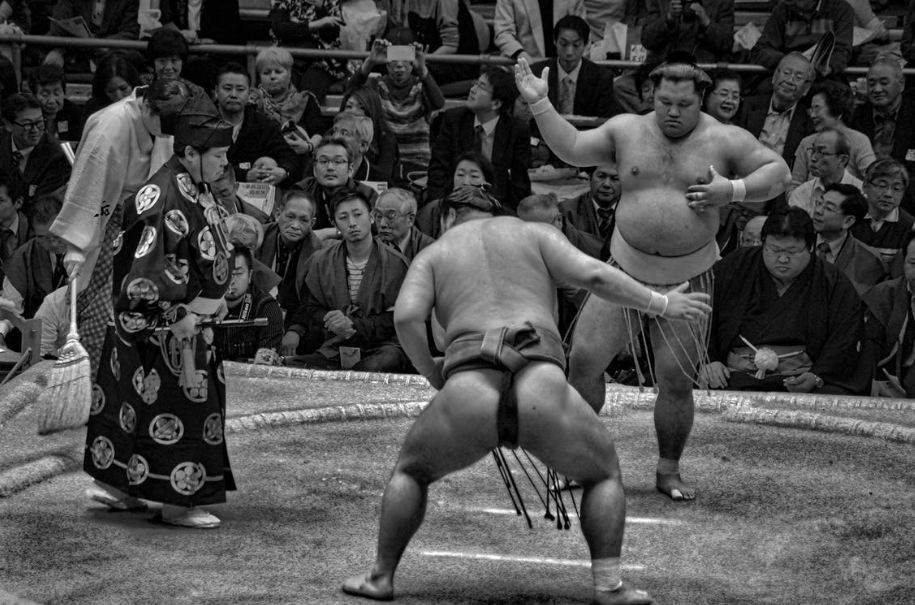What Is a Shinigami in Japanese Culture?

In Japanese culture, a shinigami is a supernatural being known as a "death god" or "death spirit." Emerging during the Edo period, shinigami guide souls to the afterlife and reflect both fear and reverence. They're rooted in Japanese folklore and religious beliefs, like Shinto and Buddhism. These entities appear in literature and modern media, exploring themes of mortality and justice. Shinigami challenge individuals to accept death as a natural, integral part of life. You'll uncover how these intriguing figures continue to shape cultural narratives and beliefs about the life-death continuum.
Origins of Shinigami
The concept of shinigami, which evokes a sense of mystery and intrigue, traces its origins back to Japanese folklore and religious beliefs. You'll find that shinigami origins are not as ancient as you might think; they're relatively modern, emerging prominently during the Edo timeframe (1603-1868). This period marked a time when Japan was undergoing significant cultural and social changes, with traditions such as the Geisha Tradition also evolving during this time. It was during this time that the term "shinigami" started appearing in literature and plays.
In shinigami mythology, these beings are often depicted as death spirits, guiding souls to the afterlife. Unlike the grim reapers of Western culture, shinigami don't usually have a singular image or form. Instead, they can be seen as more abstract entities, sometimes benevolent and other times malevolent. Their roles and characteristics can vary, depending on the story or context. This variability in shinigami mythology reflects the diverse religious beliefs from which they stem, including Shinto and Buddhism.
Understanding shinigami origins helps you appreciate how these figures have evolved over time, influenced by societal changes and religious syncretism. It's fascinating to see how these mysterious entities continue to capture imaginations today.
Shinigami in Folklore
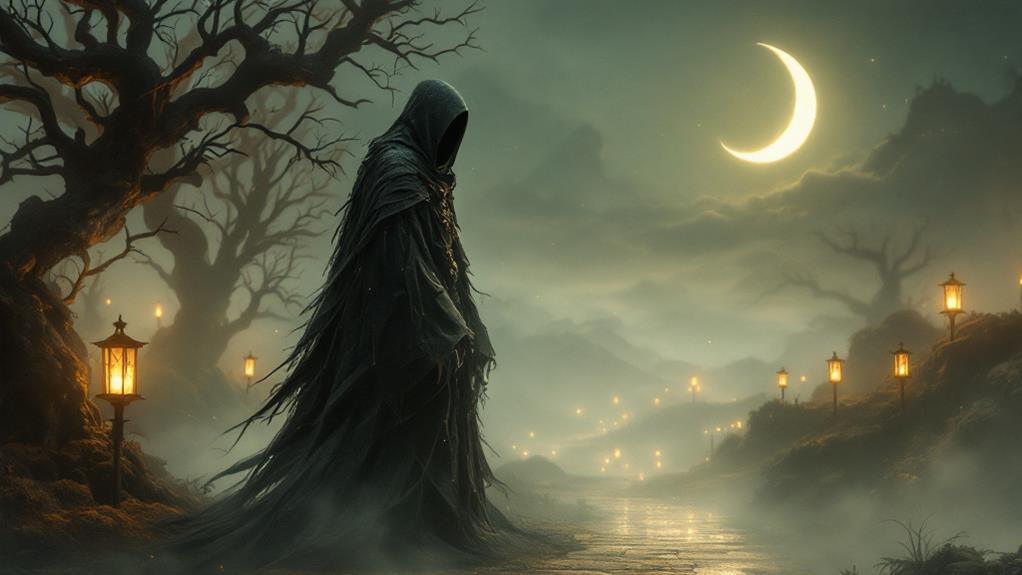
Moving from the origins to their role in folklore, shinigami take on varied and fascinating forms in Japanese tales. As you explore these stories, you'll find that shinigami often appear as mysterious figures with distinct characteristics that set them apart from other supernatural beings. They're typically depicted as guides who escort souls to the afterlife, embodying both fear and reverence. Their presence is sometimes subtle, appearing at the moment of death or in dreams, offering a glimpse into the unknown. In a similar way, Hindu deities like Shiva are also seen as guides, providing strength and light in life's challenges. In folklore, shinigami rituals play an essential part in how these entities interact with humans. You might encounter stories where rituals are performed to appease shinigami, ensuring a peaceful passage for the deceased. These rituals can vary, but they often involve offerings or prayers to acknowledge the shinigami's role and seek their favor. Through these practices, the balance between the living and the dead is maintained, highlighting the shinigami's significance in the cycle of life and death.
Role in Literature
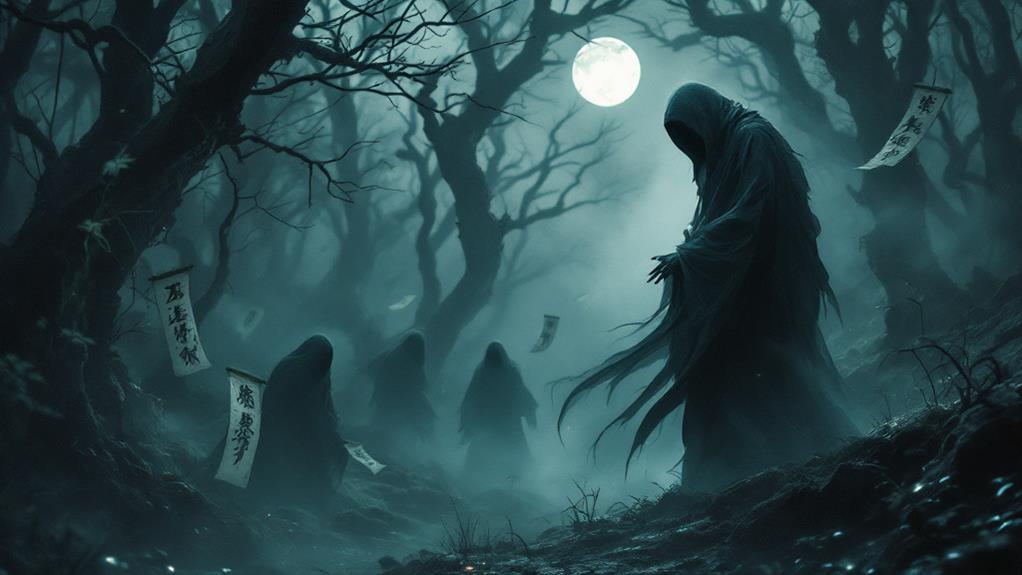
Shinigami have captured the fascination of many authors and have become significant characters in literature. You'll find that their mysterious and deathly nature offers rich material for storytelling. They often serve as powerful literary influences, shaping themes around life, death, and the supernatural. Writers use shinigami to investigate existential questions and moral dilemmas, offering readers deep philosophical reflections. These entities are more than just otherworldly figures; they're catalysts for character development and plot progression.
In literature, shinigami fulfill diverse narrative functions. They might appear as guides leading souls to the afterlife, creating opportunities for characters to confront their own mortality. Sometimes, they act as arbiters of justice, delivering poetic retribution or mercy, depending on the story's moral compass. Authors use them to blur the line between life and death, adding complexity and intrigue to their narratives. When you read about shinigami, you'll notice they often embody cultural fears and fascinations, bridging the gap between traditional folklore and contemporary storytelling. Ultimately, their presence in literature offers a unique lens through which you can examine the human condition, making them enduring and enchanting figures in storytelling.
Shinigami in Modern Media
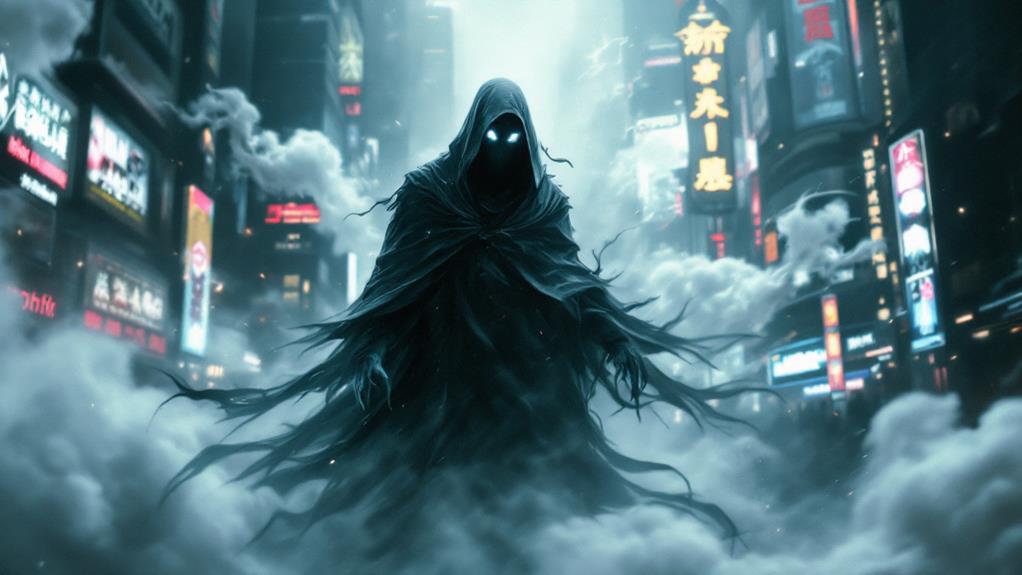
In modern media, shinigami continue to captivate audiences, taking on new forms and roles that reflect contemporary themes and aesthetics. You'll encounter them in anime, manga, and video games, each medium offering unique shinigami adaptations. These figures often possess distinct shinigami characteristics, such as supernatural powers, mysterious appearances, and a connection to the afterlife. For instance, in the popular anime "Death Note," the shinigami Ryuk plays a crucial role, with his death note causing chaos on Earth. His playful yet sinister demeanor exemplifies the unpredictable nature often associated with shinigami.
Video games also present shinigami in different light. In "Persona 3," you'll find shinigami as integral parts of the story, guiding characters through life-and-death situations. These adaptations highlight shinigami characteristics, like wisdom and detachment from human emotions, which add depth to their roles.
In manga, you can investigate narratives where shinigami are both allies and antagonists, adding intrigue and complexity to the stories. The adaptability of shinigami across media guarantees they remain fascinating and relevant, inviting you to investigate their evolving roles and the themes they embody in modern storytelling.
Cultural Interpretations
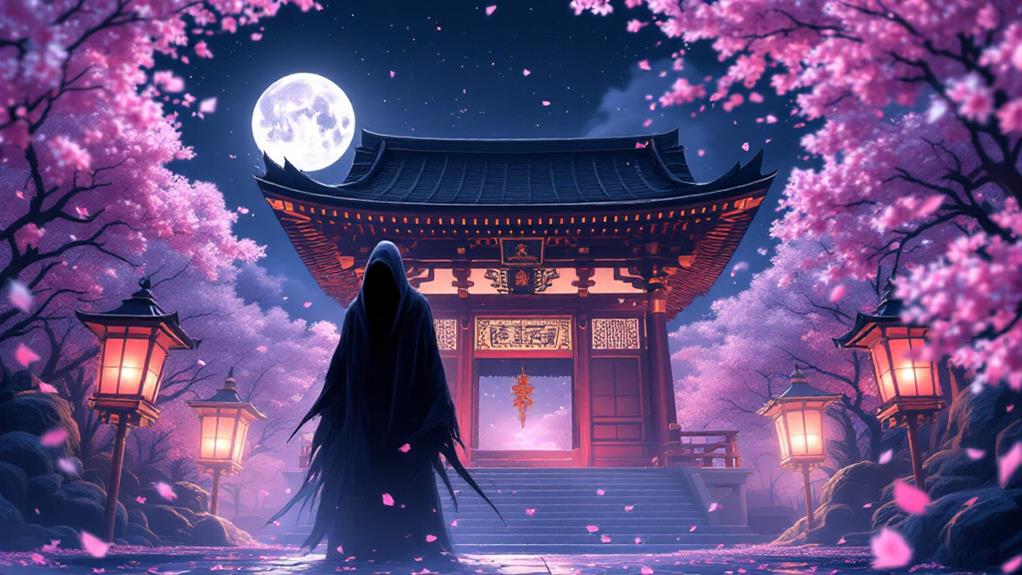
Across diverse cultures, interpretations of shinigami reveal intriguing differences that stem from each society's unique beliefs about death and the afterlife. In Japan, shinigami are often seen as grim reapers, guiding souls from the living world to the afterlife. These figures are sometimes depicted as solemn and quiet, reflecting the serious nature of their role. Shinigami representations in Japan can vary, though they typically maintain a respectful demeanor, acknowledging death as a natural and inevitable part of life.
In contrast, some Western cultures have reimagined shinigami as more menacing or even malevolent beings, possibly influenced by the darker portrayals of death-related figures in their own folklore. These shinigami representations often emphasize the fear and mystery surrounding death, highlighting the cultural differences in viewing life's end.
Shinigami rituals, on the other hand, can differ widely depending on cultural context. In Japanese traditions, rituals involving shinigami might include offerings or prayers to honor the deceased, reflecting a spiritual connection to ancestors. Meanwhile, other cultures may incorporate shinigami into stories or ceremonies that differ greatly from Japanese customs, showcasing the varied ways societies interpret these fascinating figures.
Symbolism and Themes
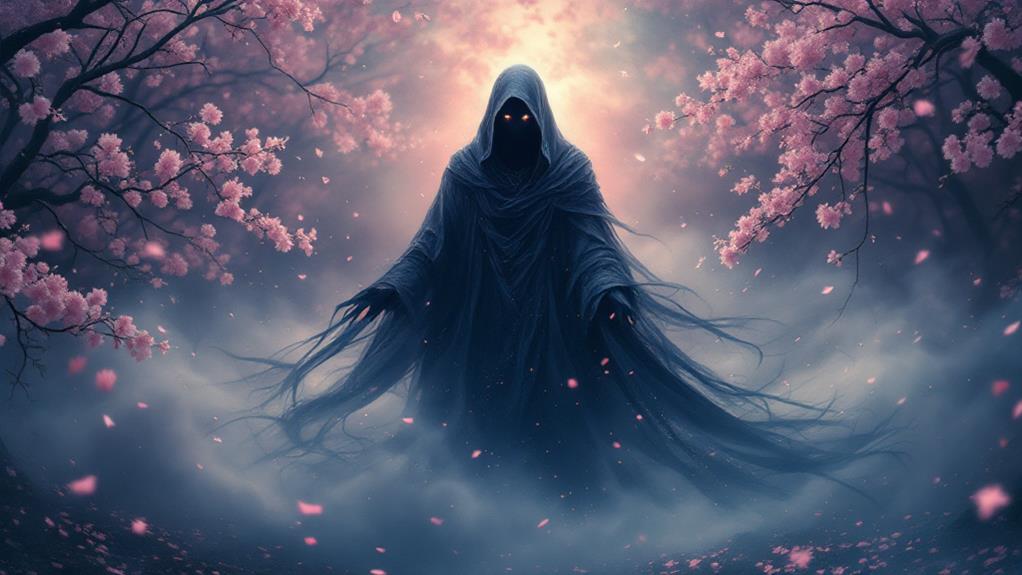
Examining the symbolism and themes associated with shinigami offers a deeper understanding of their role across different cultures. Shinigami often serve as death personification, embodying the inevitable end all living beings face. They act as reminders of mortality, urging you to reflect on life's impermanence. This personification isn't meant to invoke fear but rather to encourage acceptance of death as a natural part of life. In this light, shinigami become more than mere harbingers of doom; they are catalysts for contemplation and growth.
In many stories and beliefs, shinigami also serve as spiritual guides, leading souls to the afterlife. Their presence emphasizes the shift from the physical world to the spiritual domain. As spiritual guides, they provide comfort and assurance that death is not an end but a transformation. This duality in their symbolism—death personification and spiritual guidance—highlights the complexity of human emotions surrounding death. Embracing both roles, shinigami help you navigate your fears and uncertainties about death, promoting understanding and acceptance. Through these themes, shinigami bridge the gap between life and death, reminding you that every ending is also a new beginning.

